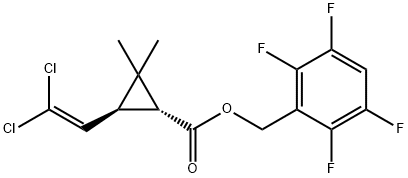SAFETY INFORMATION
| Signal word | Danger |
|---|---|
| Pictogram(s) |
 Skull and Crossbones Acute Toxicity GHS06  Environment GHS09 |
| GHS Hazard Statements |
H315:Skin corrosion/irritation H331:Acute toxicity,inhalation H410:Hazardous to the aquatic environment, long-term hazard |
| Precautionary Statement Codes |
P261:Avoid breathing dust/fume/gas/mist/vapours/spray. P264:Wash hands thoroughly after handling. P264:Wash skin thouroughly after handling. P271:Use only outdoors or in a well-ventilated area. P273:Avoid release to the environment. P302+P352:IF ON SKIN: wash with plenty of soap and water. |
COMPUTED DESCRIPTORS
| Molecular Weight | 371.2 g/mol |
|---|---|
| XLogP3 | 5 |
| Hydrogen Bond Donor Count | 0 |
| Hydrogen Bond Acceptor Count | 6 |
| Rotatable Bond Count | 5 |
| Exact Mass | 370.0150477 g/mol |
| Monoisotopic Mass | 370.0150477 g/mol |
| Topological Polar Surface Area | 26.3 Ų |
| Heavy Atom Count | 23 |
| Formal Charge | 0 |
| Complexity | 482 |
| Isotope Atom Count | 0 |
| Defined Atom Stereocenter Count | 2 |
| Undefined Atom Stereocenter Count | 0 |
| Defined Bond Stereocenter Count | 0 |
| Undefined Bond Stereocenter Count | 0 |
| Covalently-Bonded Unit Count | 1 |
| Compound Is Canonicalized | Yes |
PRODUCT INTRODUCTION
description
Transfluthrin is a carboxylic ester obtained by formal condensation of 3-(2,2-dichlorovinyl)-2,2-dimethylcyclopropanecarboxylic acid and 2,3,5,6-tetrafluorobenzyl alcohol. It has a role as a pyrethroid ester insecticide. It is a carboxylic ester, a member of cyclopropanes, an organochlorine compound and an organofluorine compound. It is functionally related to a 3-(2,2-dichlorovinyl)-2,2-dimethylcyclopropanecarboxylic acid.

